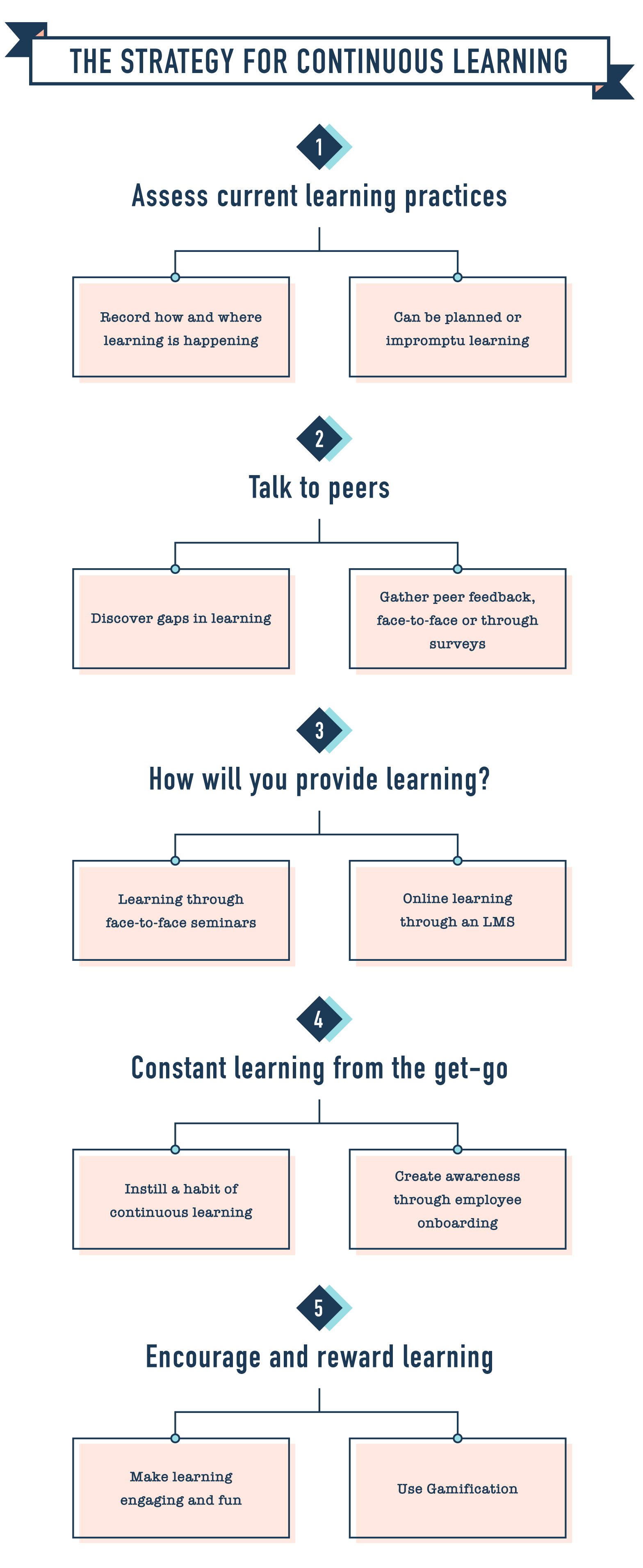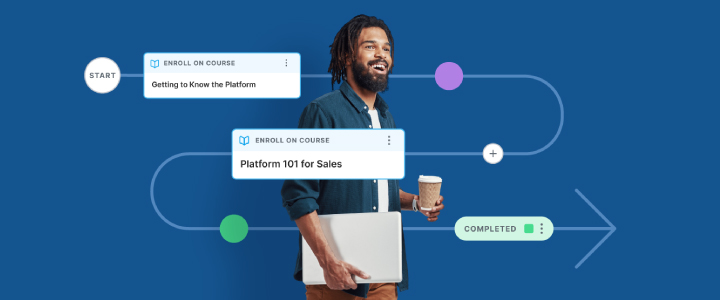
4 min reading time
Continuous Learning: A Guide for Your Business
Continuous learning, continual learning, constant learning, lifelong learning – whatever you want to call it, is a concept that businesses training employees should know about.
Not only beneficial for your employees, the idea of continuously learning and developing also helps your business. It supports your growth and creates opportunities in different ways. Whether you’re doing formal training with an LMS or informal, ad-hoc learning, let’s outline exactly what continuous learning is, why it’s important, and how you can enact it within your business.
What is continuous learning?
Continuous learning, also known as constant learning, is the concept of always expanding your knowledge to gain new skills and expertise. For businesses, continuous learning is about encouraging employees to steadily learn by providing them with the tools that facilitate this learning.
Why is it important for your business?
Stimulating the brain with the continual learning of new information has several positive knock-on effects. From enhancing the cognitive ability of the individual, and increased problem-solving ability and memory, here’s some of the most reported benefits:
Facilitates adaptation
In a rapidly changing workplace, providing continual learning for each employee helps them to adapt quickly. Be it new technologies, practices, industry developments – your employees have the tools they need to keep up with industry standards. The ability to adapt also results in less roadblocks during transitions to new practices or technologies, meaning less disruption to productivity levels.
Avoids short sightedness
Myopia in the business world is a killer. It leads to a stagnant workforce, causing your business to fall behind competitors. Through continual training, your employees are constantly pushing your business forward by learning new skills. You’re always at the forefront of your industry.
Enables skills sharing
From employee onboarding training to job-based skills, creating an open environment that allows people to share knowledge is essential. Best practices can be discovered and past errors can be learned from. This all contributes to your employees developing the skills they need to be the most successful.
Creates internal career progression opportunities
Nurturing a continuous learning culture within your business means you’re training your employees for future opportunities in your organization. Hiring from within saves time, money, resources, and reduces employee turnover.
Build a strategy for continuous learning

1. Assess your current learning practices
Purposefully or not, learning is happening within your business, but it might just be informal. Significantly, if you’re creating a continuous learning strategy, it’s necessary to find out what and where this is happening.
Take note if your employees have a bi-annual training seminar, or, if a manager and an employee have impromptu training chats by the coffee machine. Every bit of learning that’s happening in your organization is important and to effectively facilitate constant learning, it’s good to know about it all.
2. Talk to peers
Learning gaps and informal training aren’t always obvious to identify, especially if you’re outside of a particular team. So why not go straight to the horse’s mouth to get the best info?
Ask your workforce – management and employees – where they see training opportunities and what they believe would work best. Depending on the size of your organization, it can be done face-to-face or through a survey. Gathering this information will provide you with a wealth of knowledge on the training already taking place, making it easier to build a strategy.
3. How will your organization provide continuous learning?
The big question your business needs to answer is ‘how do we want to enable continuous learning?’ Well, you have lots of options here.
Face-to-face seminars and sessions work well if your teams are all in one location and have time to take group classes. Alternatively, if you’re growing fast and have employees spread across the globe, online training with a learning management system is a smart choice.
Continuous learning can be on-demand, so your employees learn whenever and wherever they choose.
Alternatively, a mix of the above is a popular approach. Blended learning involves both online, in-person, webinar training, broadening the learner’s experience.
4. Constant learning from the get-go
Successful continual learning is about creating a routine. Your employees should expect to be trained, and also want to be trained.
As a business, this should be fostered into a habit the moment someone joins. Employee onboarding training is the perfect place to start. Your new hires gain new skills and become aware that learning is a priority within your business’s culture.
5. Encourage and reward learning
Introducing a continuous learning culture can be challenging. But, there are ways to speed up the process and make it stick with your employees. Our favorite is through incentives. Award prizes and opportunities, like a half-day off work, to your top company learners. Or, if you have an LMS, use gamification to encourage employees to win badges and move up on your company’s learning leaderboards. Remember that continuous learning takes time to establish in a business, but, if done right, it yields powerful results for both your staff and your company.
By following these tips, you can create a learning culture that impacts your employees’ productivity, your retention rates, and in turn, your business’s bottom line.
Have you implemented continuous learning in your business’s training strategy? Let us know in the comments below.



